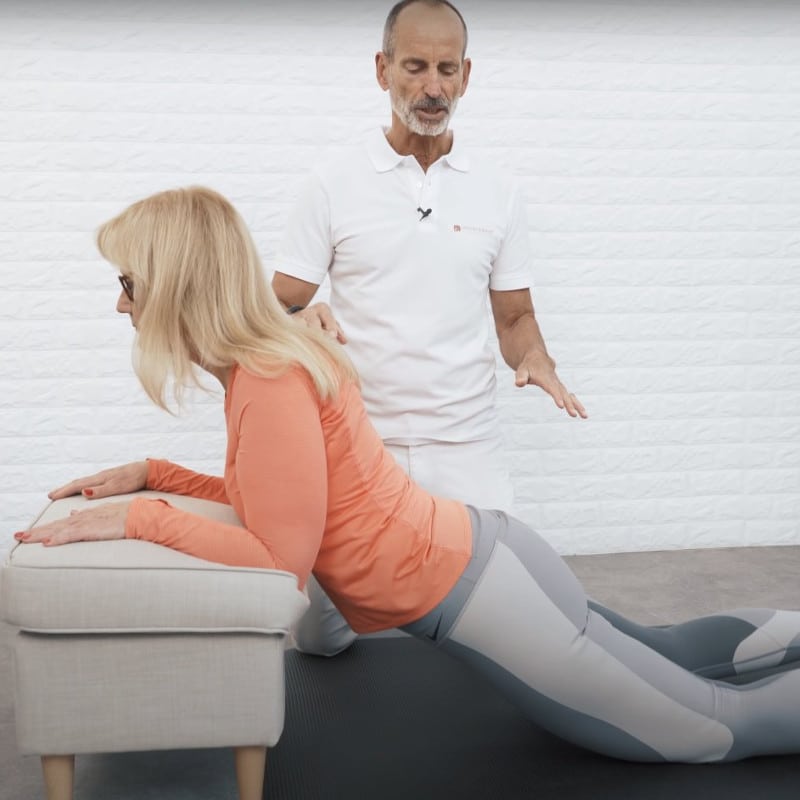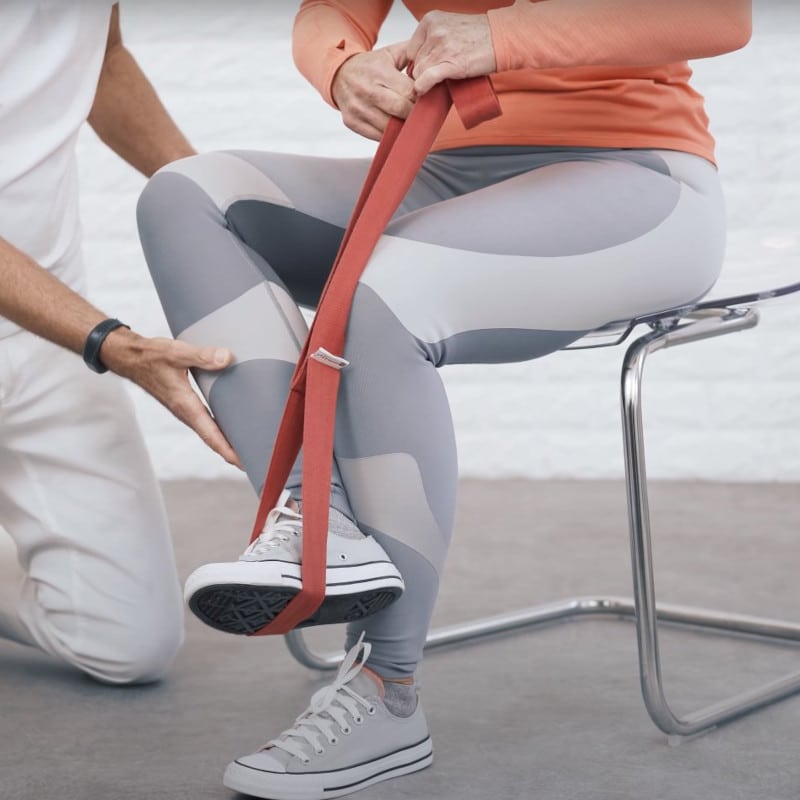The Best Hip Exercises to Relieve Hip Pain
Body Part:
Hip
Equipment:
Stretching Strap
Level:
Beginner
Body Part:
Hip
Equipment:
Stretching Strap
Level:
Beginner
If you are suffering from hip pain, you may worry that exercise will only make it worse. On the contrary! Exercising will help strengthen your muscles and fasciae so that your hip may recover and the pain subside. Our Liebscher & Bracht pain therapy makes it possible. In the following, we are sharing two special hip exercises with you, which you can ease into gradually. If you do them regularly, your hip health will improve in no time at all! Let’s get started.

Sign up for our free newsletter and discover how to manage your pain yourself. Every two weeks, we’ll deliver follow-along videos and articles to your inbox.

The first thing you need is an upholstered stool, couch or armchair – something gentle where you can rest your arms without causing yourself pain. Then get down on all fours ready to place your arms on the flat, padded surface in front of you. If you find your knees are too sensitive, use something like a pillow underneath them to ease the pressure when you kneel down.

You’ll need a chair for this second hip exercise. Sit down a little away from the front edge to prevent slipping. But don’t sit too far back; otherwise, you will lose some freedom of movement. (See the second illustration.)
We’ll assume the problem is with your right hip. So if yours is the left hip, then just swap sides.
You will also need an stretching strap if you have one. Otherwise, you can use a belt or a towel – something you can let hang down to your foot, and also grip and pull with both hands.
That’s it! These two short exercises should help lessen the pain. Remember to do them regularly and not to exceed your pain threshold! All the best.

Sign up for our free newsletter and discover how to manage your pain yourself. Every two weeks, we’ll deliver follow-along videos and articles to your inbox.
Then we would be happy if you shared it with your friends: